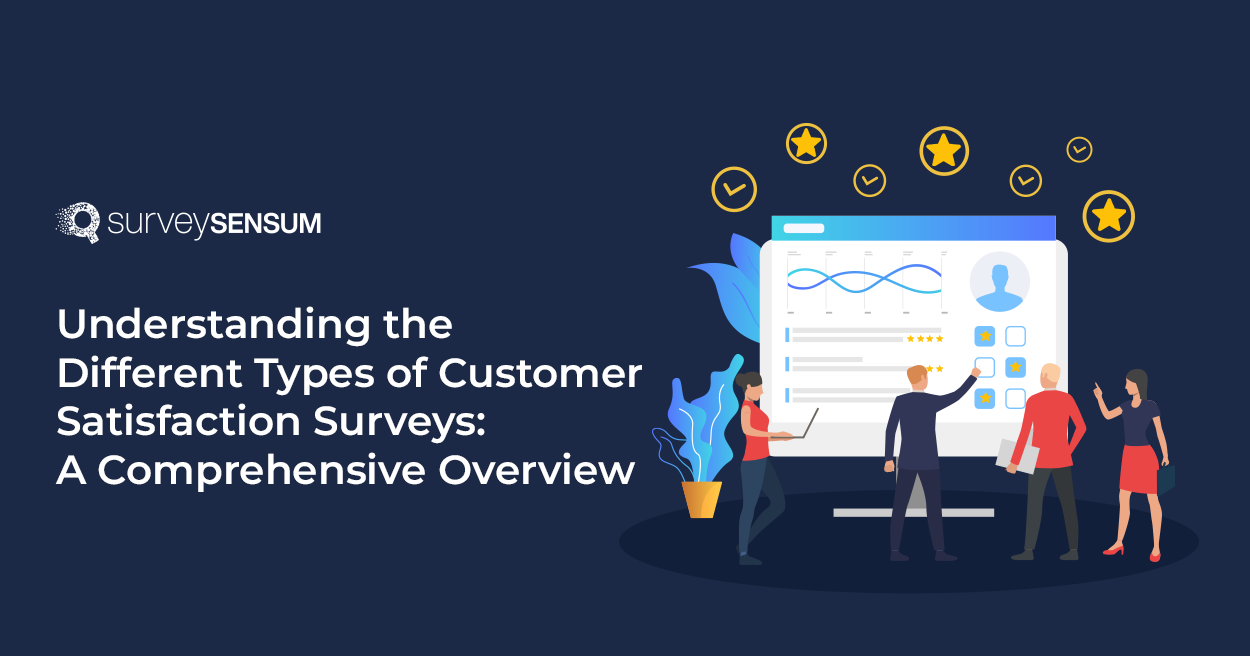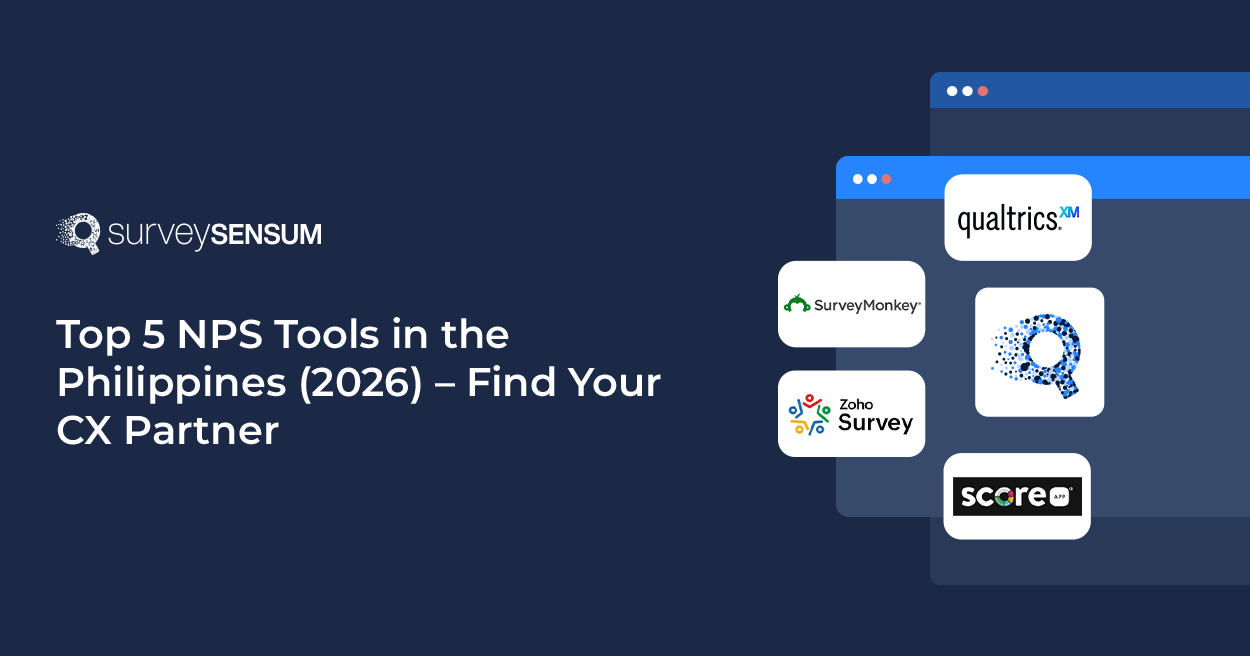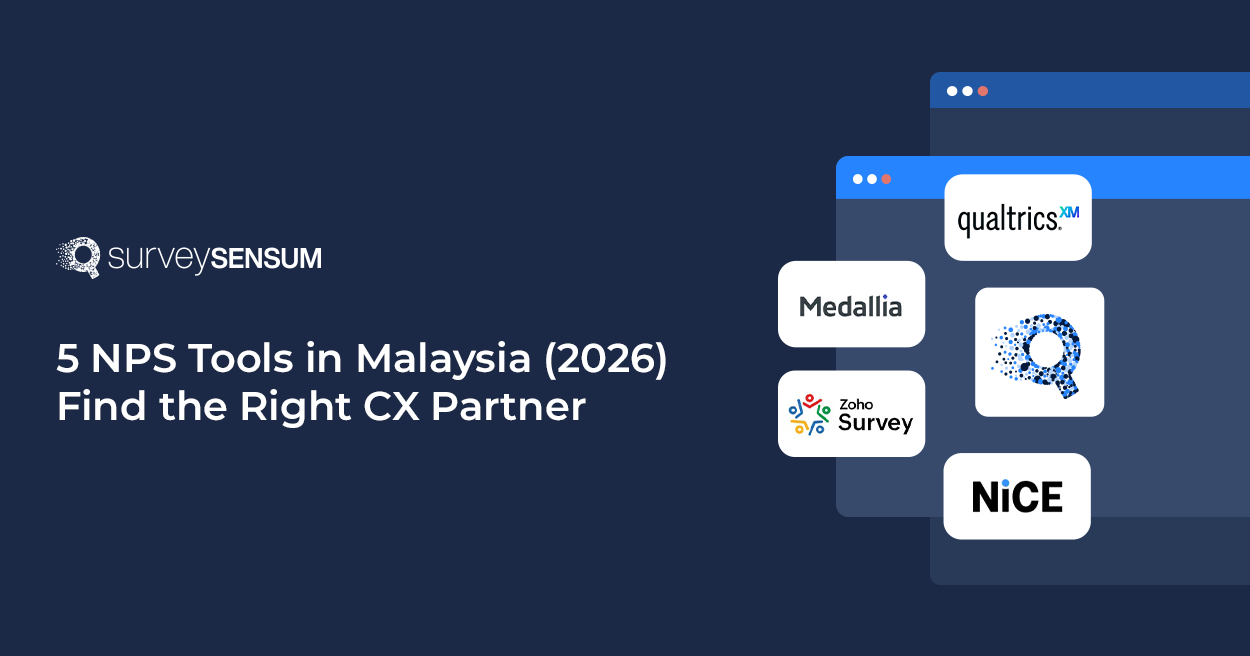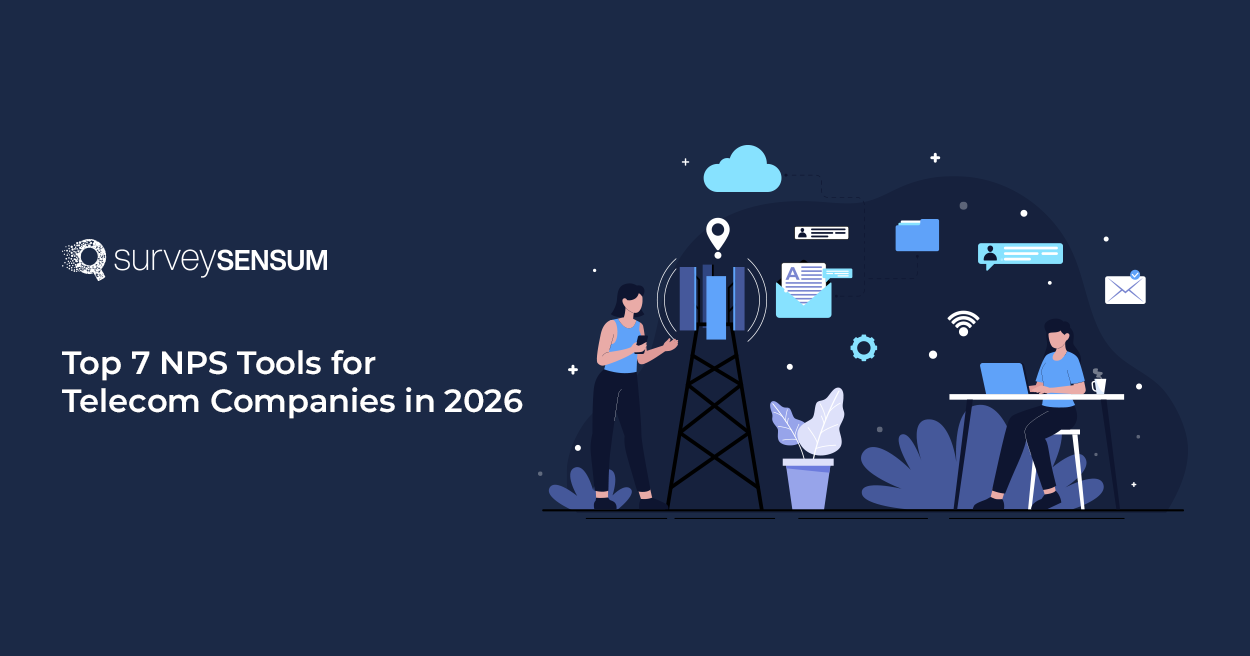

Imagine you just got a product you ordered online, and in just 10 minutes after the delivery, you received an NPS survey asking about your likelihood to recommend the product.
You’ve not even opened the product yet so, how can you recommend it to someone?
What’s more – instead of asking about your satisfaction level with the delivery of the product, they are asking about the recommendation.
Isn’t it weird?
I’m sure you don’t want this to happen with your customers as this is an important feedback touchpoint, and not getting it right is just a missed opportunity.
That’s why it’s crucial to launch the right types of customer satisfaction surveys at the right time.
So, what to do in such a scenario?
Launch a CSAT survey asking, ‘On a scale from 1-5, how satisfied are you with your delivery experience?’ Asking this question helps you gauge their delivery experience, which in turn helps you improve it and enhance their experience with the brand.
But that’s one case. How to choose the right kind of customer satisfaction survey at different touchpoints?
Let’s get into it!
What is a Customer Satisfaction Survey?A customer satisfaction survey is used by businesses to collect customer feedback about their experiences with products, services, or interactions with the company. It includes questions about overall satisfaction, and specific aspects of the experience (like product quality, customer service, or website usability), and also gathers suggestions for improvement.
The goal is to understand how satisfied customers are and identify areas where the business can enhance the customer experience.
Types of Customer Satisfaction Surveys
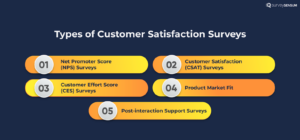
Here are the 5 types of customer satisfaction surveys that you can use at different touchpoints across the entire customer journey.
1. Net Promoter Score (NPS) Surveys
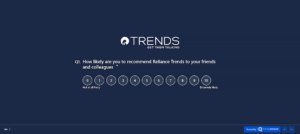
Net Promoter Score (NPS) surveys are the widely used survey to gauge customer loyalty on an 11-point scale. The respondents of the NPS scale are divided into three categories, Promoters (9-10), Passives (7-8), and Detractors (0-6).
Examples of Net Promoter Score Survey Questions
- On an 11-point scale, how likely are you to recommend us to your friend or colleague?
- How likely are you to recommend our dealership to others?
- Based on your experience with our digital banking, how likely are you to recommend us to your friend and colleague?
- How likely are you to recommend our telecommunications services to friends or colleagues?
- On a scale of 0 to 10, how likely are you to recommend our insurance company to your friend or colleague based on your claims experience?
→ Read further to learn about the right NPS questions to ask!
Why NPS Surveys?
NPS surveys measure your customers’ likelihood of recommending your product and services to their friends or colleagues. This can lead to spreading good word of mouth – branding your business, and increasing customer loyalty, satisfaction, and overall experience.
How to Calculate NPS?
To calculate NPS, subtract the percentage of Detractors from the percentage of Promoters.
NPS= Percentage of Promoters−Percentage of Detractors
Example:
- Promoters: 60%
- Passives: 20%
- Detractors: 20%
NPS = 60% − 20% = 40%
So, the NPS in this example is 40%.
→ Read more about how to calculate NPS the right way!
Reap the various benefits of NPS with SurveySensum and launch your surveys today!
2. Customer Satisfaction (CSAT) Surveys

CSAT surveys aim to measure customer satisfaction based on their experience with your products and services. This survey can be asked on a 1-5 or a 1-7 point scale ranging from least satisfied to highly satisfied.
Examples of Customer Satisfaction Survey
- On a scale of 1- 5, how satisfied are you with your recent shopping experience?
- How was your overall satisfaction with the purchase of your vehicle on an 11-point scale?
- How satisfied are you with the ease of use of our mobile banking app? Rate on a 1-7 point scale.
- Please rate your satisfaction with the customer service on a 5-point scale.
- On a scale of 1-10, how satisfied are you with the claims handling process provided by our insurance company?
→ Read further to know about the right CSAT questions to ask!
Why CSAT Surveys?
With CSAT surveys, you can get insights into customer satisfaction levels, helping you identify areas of pain points and improvements. This will help you to make informed decisions, enhance customer experiences, and build strong relationships with your customer base.
How to Calculate CSAT Score?
The formula to calculate CSAT is:
(Number of satisfied customers (4 and 5) / Number of survey responses) x 100 = % of satisfied customers
Example:
You conducted a CSAT survey and received 50 responses. Among these, 35 customers rated their satisfaction as either 4 or 5.
Number of satisfied customers = 35
Total survey responses = 50
Percentage of satisfied customers= (35/50) × 100 = 70%
So, in this example, the CSAT score would be 70%.
→ Read further to learn how to calculate your CSAT score!
3. Customer Effort Score (CES) Surveys

With Customer Effort Score (CES) surveys, you can measure how much effort your customers are putting into using your product or service to achieve their desired outcomes.
Examples of Customer Effort Score Survey
- How easy was it for you to find the products you were looking for during your recent shopping experience on a 5-point scale?
- On a scale of 1 to 5, how easy was it to schedule a service appointment for your vehicle?
- How would you rate the ease of navigating our online banking platform?
- Please rate the level of effort required to resolve your recent service inquiry or issue on a scale of 1 to 5.
- On a scale of 1 to 7, how easy was it to file a claim with our insurance company and complete the necessary documentation?
→ Read further to know about the right CES questions to ask!
Why Customer Effort Score Surveys?
CES surveys highlight pain-point areas where your customers find obstacles in their interactions. By resolving those areas you can reduce their efforts leading to enhancing their experience, increasing satisfaction, and ultimately improving customer loyalty and retention.
How to Calculate CES?
To calculate the average score, add up all the individual scores and divide by the total number of responses to get the average score.
Example:
Suppose you received the following CES ratings from 10 customers on a scale of 1 to 5:
- 3 customers rated 4
- 4 customers rated 3
- 2 customers rated 5
- 1 customer rated 2
Total Score = (3×4) + (4×3) + (2×5) + (1×2) = 12 + 12 + 10 + 2 = 36
Average Score = 36/10 = 3.6
So, the CES score in this example would be 3.6.
→ Know more about how to calculate CES efficiently!
4. Product-Market Fit

Product-market fit (PMF) describes the alignment between your product or service and your targeted market. It determines the success and viability of your product in the market.
Examples of Product Market Fit Survey
- How would you feel if you could no longer use our [product]?
- On a scale of 1-10, how well does our vehicle meet your needs in terms of performance?
- How satisfied are you with the passbook functionality of our mobile banking app?
- Would you recommend our telecommunications services to friends or colleagues based on the recent network coverage experience?
- On an 11-point scale, how well does our insurance coverage cater to your specific needs?
Why Product-Market Fit Surveys?
If your product achieves a strong PMF, it means it resonates with the target market, meets its expectations, and addresses its pain points effectively. This alignment leads to increased customer acquisition, satisfaction, and loyalty, ultimately driving business growth and profitability.
So, strike a chord with your customers to gauge the level of alignment between your products and the market’s demands.
Examples of Product Market Fit Survey
- How would you feel if you could no longer use our [product]?
- On a scale of 1-10, how well does our vehicle meet your needs in terms of performance?
- How satisfied are you with the passbook functionality of our mobile banking app?
- Would you recommend our telecommunications services to friends or colleagues based on the recent network coverage experience?
- On an 11-point scale, how well does our insurance coverage cater to your specific needs?
Why Product-Market Fit Surveys?
If your product achieves a strong PMF, it means it resonates with the target market, meets its expectations, and addresses its pain points effectively. This alignment leads to increased customer acquisition, satisfaction, and loyalty, ultimately driving business growth and profitability.
So, strike a chord with your customers to gauge the level of alignment between your products and the market’s demands.
5. Post-interaction Support Surveys

Would you like to analyze the efficiency of the customer support team?
This is where post-interaction support surveys come in. These surveys are asked from customers after a support call to gather feedback on the quality and experience. It also focuses on the customer’s experience with the company’s frontline representatives, support teams, or specific service delivery.
Examples of Post-interaction Support Survey
- How satisfied are you with the assistance provided by our customer service representative during your recent inquiry?
- On a scale of 1 to 10, how well did our service advisor address your questions during your recent visit?
- How would you rate the responsiveness of our support team in resolving your recent inquiry?
- Did our customer service representative adequately address your technical problem during your recent interaction?
- On an 11-point scale, how satisfied are you with the helpfulness of the claims representative during your recent claim process?
Why Post-interaction Support Surveys?
Conducting this survey will enable you to assess the effectiveness of your customer service. By collecting feedback on individual interactions, you can identify what went wrong and what you should continue doing, and improve the overall customer experience.
→ Read more about the strategic impact of the journey-based csat survey!
This was all about the different types of customer satisfaction surveys that you can launch at different touchpoints in your entire customer journey.
But do you know there are different types of scales used to launch customer satisfaction surveys?
Now that you know all the different types of customer satisfaction surveys, why wait? Deploy them all in under 5 minutes with SurveySensum!
Different types of Questions to Ask in a CSAT Survey
Now that you’re here, let’s quickly look at the uses of different types of scales with examples to understand them better.
1. Binary Scale
A binary scale is one of the easiest scales that offers only two options to respondents i.e., either ‘yes’ or ‘no’, ‘true’ or ‘false’, etc. It is a straightforward and simple survey scale that allows respondents to provide a direct and concise answer.
For example
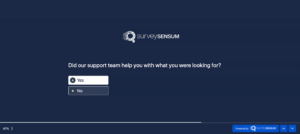
- Did you find the product helpful?
- Did our claims department process your claim promptly?
2. Rating Scale
A rating scale is another type of survey question that asks respondents to rate their feedback or experience on a predefined scale. The 1-5 point scale ranges from low to high or from disagree to agree, offering multiple response options that allow for a more nuanced answer.
Example:

- On a scale of 1 to 5, how satisfied are you with our customer service?
- How would you rate the call quality of our telecom services on a scale of 1 to 5?
3. Likert Scale
The Likert scale is a popular survey question that ranges from 1-5 or 1-7 point scale from lower to higher. It measures the customer sentiment on whether they ‘strongly agree’ or ‘strongly disagree’ with the given question.
Example:

- On a scale of 1-5, rate your experience on how satisfied you are with the website navigation.
- How convenient was it for you to use our website on a 5-point scale?
4. Open-Ended Scale
An open-ended question is a must in all surveys because it gives customers a free space to give detailed feedback or suggestions about their experiences with your business in their own words.
Example:
- How can we improve your experience?
- Why did you choose us?
With all these customer satisfaction surveys, you can ace your business and delight your customers.
Ask your customer what you need to know in the most effective way with engaging surveys using SurveySensum!
But wait.
Do you know how to create a customer satisfaction survey?
Create a Customer Satisfaction Survey with SurveySensum
Here are 4 steps to create your CSAT surveys:
STEP 1: Sign up for free on the SurveySensum website.
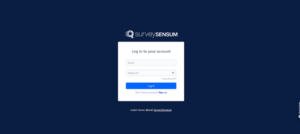
STEP 2: To create a survey, choose customer satisfaction survey aka CSAT survey in-built template.
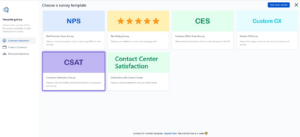
STEP 3: Personalize the in-built template as per your business’ branding and targeted customers and click on the shared survey.
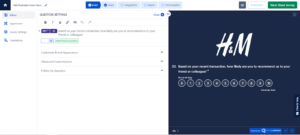
STEP 4: Share surveys on those channels where your customers are present. Most businesses use WhatsApp surveys nowadays because it’s inexpensive and effortless.
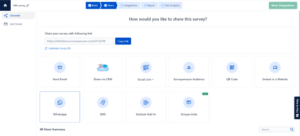
STEP 5: After creating and shooting the surveys in only four steps, you can analyze the gathered feedback with the in-house AI bot Text Analytics Software of SurveySensum.
Here, our journey of customer satisfaction surveys comes full circle, so, let’s sum up.
How to Take Action on Customer Feedback?
Collecting customer feedback using CSAT tools is essential but not enough, what actually matters is what you do with it. Here are some strategies on how to take action on customer feedback:
1. Collect Feedback: Launch the Right Survey at the Right Time
- Importance: Launching the right survey at the right time is crucial because it ensures that you gather relevant and timely feedback from your customers. Example: If you’re a retail business, sending a survey after a purchase or interaction can capture immediate feedback while the experience is fresh in the customer’s mind. This timely feedback is more accurate and actionable.
2. Analyze Feedback with Text Analytics

- Automation of Segregation: Text Analytics automates the process of sorting through feedback by categorizing responses based on keywords, sentiments, or themes. This saves time and ensures that you can quickly identify trends and patterns in the data.
- Detailed Reports: This analysis provides detailed reports with insights such as common issues, positive feedback trends, areas for improvement, and sentiment analysis. These reports help in understanding the overall sentiment of customers and making data-driven decisions.
3. Prioritize Feedback with CX Consultation
- Importance of Prioritization: Not all actions on the feedback can be taken immediately. You must identify areas of improvement and prioritize efforts based on their impact on customer experience and business goals.
- Solution: Expert Guidance — SurveySensum provides CX consultants who assist in identifying critical issues that need fast resolution, aligning feedback with business objectives, and creating a roadmap for addressing feedback effectively.
4. Real-Time Ticketing System and SLA Implementation

- Instant Alerts: A real-time ticketing system provides instant alerts for new feedback or issues raised by customers. This allows teams to respond promptly and address concerns in a timely manner.
- SLA Setting: Setting Service Level Agreements helps in defining response times and resolution targets. If issues are not resolved within the specified timeframe, escalation procedures can be triggered to ensure quick resolution and customer satisfaction.
5. Take Action and Close the Feedback Loop

- Actionable Insights: Measuring CX metrics is not just about receiving good scores but also about taking targeted actions based on insights gained from feedback analysis. This includes addressing pain points, improving processes, and enhancing customer experiences.
- Solution: Closing the Loop — Closing the feedback loop involves informing customers about the actions taken in response to their feedback. This transparency builds trust and shows customers that their input is valued and acted upon.
By following these steps, you can ensure that customer feedback is acknowledged, acted upon promptly, and closed with satisfactory resolutions, leading to improved customer satisfaction and loyalty.
→ Create an effective customer satisfaction strategy with these tips!
Takeaway
In conclusion, having a comprehensive understanding of the different types of customer satisfaction surveys can empower your business to effectively measure and improve customer satisfaction.
Whether it’s NPS, CES, or CSAT surveys, each type offers valuable insights into customer experiences. By using these surveys strategically, you can identify areas for improvement, close the loop, and drive overall success.
To easily create and deploy these surveys, try SurveySensum, an efficient customer satisfaction software that allows you to effortlessly design and analyze customer satisfaction surveys.
FAQs
1. What are the seven Different Ways of Measuring Customer Satisfaction?
- Net Promoter Score (NPS)
- Customer Effort Score (CES)
- Customer Satisfaction Score (CSAT)
- Repeat Purchase Rate
- Customer Churn Rate
- Customer Retention Rate
- Customer Lifetime Value (CLV)
Customer satisfaction surveys are instruments utilized by companies to collect input from customers regarding their interactions with products, services, or engagements with the organization. These surveys usually inquire about general satisfaction levels, and particular facets of the experience, and may solicit suggestions or comments for enhancement.
3. What are the 5 basic levels of customer satisfaction?
The five basic levels of customer satisfaction are:
- Very Dissatisfied: Customers who are extremely unhappy with their experience or the product/service provided.
- Dissatisfied: Customers who are not satisfied with their experience and may have encountered issues or challenges.
- Neutral: Customers who neither strongly like nor dislike their experience; they are somewhat indifferent.
- Satisfied: Customers who are content with their experience and found it to be acceptable.
- Very Satisfied: Customers who are highly pleased with their experience and perceive it as exceeding their expectations.
The three types of customer satisfaction are:
- Transactional Satisfaction: This type of satisfaction is based on a specific interaction or transaction with the company, such as purchasing a product, receiving customer support, or visiting a store.
- Overall Satisfaction: This type of satisfaction encompasses the customer’s overall experience with the company across multiple interactions and touchpoints. It reflects the cumulative impression formed by various interactions over time.
- Expectation-Based Satisfaction: This type of satisfaction is influenced by how well the company meets or exceeds the customer’s expectations. It compares the customer’s expectations before an interaction with their actual experience, influencing their satisfaction level.






